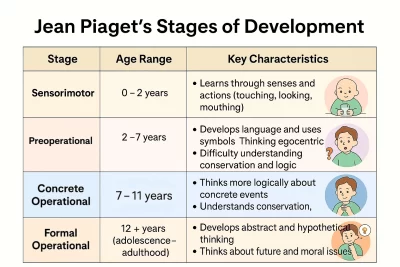
Indianapolis Painters: Woodru's Biography, Artworks, & Facts

Indianapolis painters have long contributed to the rich tapestry of American art, with their diverse styles and profound insights shaping the cultural landscape of the Midwest. Among these artists is Hale Woodruff, a name synonymous with innovation, social commentary, and artistic excellence. His life and work serve as a beacon of inspiration not only for his peers but also for future generations of artists who seek to understand the intersections of art with social justice, identity, and history.
Born in the early 20th century, Woodruff made remarkable contributions to the art world, drawing attention to African American experiences through his vibrant murals and painted narratives. In cities like Indianapolis, where the appreciation for local painters thrives, understanding Woodruff's biography is crucial in acknowledging his impact on the community and beyond. This article delves into Woodru's life, his artistic development, major works, and his enduring legacy within the art community, particularly in relation to social issues and education.
Early Life and Education
Hale Woodruff was born in 1900 in Cairo, Illinois, a city shaped by the convergence of different cultures and histories. His childhood was marked by significant loss; after his father passed away when Woodruff was just a teenager, his family moved to Nashville, Tennessee. It was there that Woodruff found refuge and purpose in art. The Indianapolis painters of his time were influenced by similar experiences of resilience and community, making his journey relatable to many budding artists.
Woodruff attended the John Herron Art Institute in Indianapolis, where he honed his skills and nurtured his artistic vision. The institute played a vital role in his development, exposing him to various artistic movements and providing a foundation that would support his future endeavors. His education was not limited to the classroom; he traveled to France, where he immersed himself in European art, further expanding his creative scope and deepening his appreciation for the complexities of African art and Cubism.
Artistic Development and Influences
Woodruff's artistic journey was shaped by a multitude of influences, from his studies in Europe to the profound impacts of African heritage. His time overseas enriched his knowledge of different styles and techniques, yet it was his return to America that ignited a new direction in his work. He began to engage more deeply with the social issues affecting African Americans, recognizing the power of art as a medium for change.
His encounter with renowned Mexican muralist Diego Rivera significantly influenced his approach to public artwork. Rivera's emphasis on social themes resonated with Woodruff, prompting him to explore the narrative potential of murals. This merging of artistic expression with cultural activism became a hallmark of Woodruff’s style, setting him apart from his contemporaries. Many Indianapolis painters followed in his footsteps, taking cues from his commitment to art that speaks to the human experience.
Major Works and Accomplishments
Woodruff's oeuvre is diverse and expansive, featuring works that reflect his growth as an artist and his dedication to social advocacy. Among his most notable contributions is his series of murals, characterized by their bold colors, intricate compositions, and poignant narratives. In particular, his 1939 murals for the Savery Library at Talladega College—the Amistad mutiny murals—stand as a landmark achievement in his career, telling the compelling story of the Amistad slave ship rebellion and its implications for African American history.
This monumental work not only captured the imagination of art lovers but also served as an educational tool, bringing historical truths to life in a visually striking format. Such contributions placed Woodruff on the map as a significant figure in American art, especially among the Indianapolis painters who were eager to create impactful works during the same era.
The Amistad Murals: A Landmark Achievement
The Amistad murals, a captivating depiction of rebellion and hope, showcase Woodruff's ability to intertwine history with artistry. Completed during a politically charged time in America, these murals provided a space for dialogue about freedom, justice, and the African American experience. The vibrancy of the colors used in the murals creates an emotional depth that invites viewers to engage with the story being told.
These murals are not only an artistic triumph but also a historic commentary on the issues of slavery and human rights injustices. Woodruff's work in this area resonated with many, fortifying his role as a pivotal figure in the world of public art. His dedication to chronicling African American history through his art established a legacy that would inspire future generations of artists, including many Indianapolis painters, who seek to illuminate cultural narratives through their craft.
Throughout his career, Woodruff’s focus on social issues was a consistent theme in his work. He did not shy away from grappling with the realities of the African American experience, instead infusing his artwork with narratives that reflected the struggles, triumphs, and rich heritage of his community. His unique perspective allowed him to present socially relevant themes in an accessible format, inviting broader audiences to reflect on the complex history of America.
Woodruff's murals, particularly the Amistad series, center on the notion of freedom and the fight against oppression, making profound statements about the African American journey. By addressing these vital topics, he played a crucial role in the broader discourse surrounding race and representation within the art community. This dedication to social justice is what continues to motivate Indianapolis painters and artists across the nation to explore similar themes in their work.
Contributions to Education and the Art Community
Woodruff was not only an accomplished artist but also an advocate for art education and community engagement. He understood that the future of the art world relied heavily on nurturing young talent, particularly within the African American community. As a testament to this commitment, he founded one of the first art departments at a Southern Black university, fostering an environment where Black artists could flourish.
His role as an educator extended beyond the classroom. Woodruff was instrumental in establishing the Atlanta Annuals for African American art, providing a platform for artists to showcase their work and gain recognition. He believed in creating opportunities for future generations, and his legacy lives on through the countless artists he mentored throughout his career, further solidifying his importance to both the Indianapolis painters and the broader art community.
Legacy and Impact on Future Generations
The legacy of Hale Woodruff reaches far beyond his individual accomplishments. His impact on the art world, particularly in relation to African American representation, can still be felt today. Woodruff inspired a generation of artists to use their platforms to reflect on societal issues and engage with their heritage in meaningful ways. His murals continue to be celebrated not only for their aesthetic brilliance but also for their powerful messages.
Many up-and-coming Indianapolis painters look to Woodruff as a forerunner, recognizing how his ability to intertwine art with activism opens dialogue on crucial social matters. His life's work serves as a reminder of art's capacity to incite change and foster understanding, making it essential for current artists to engage with the history and legacies of those who came before them.
Conclusion
Hale Woodruff's journey as an artist, educator, and advocate is one that exemplifies the power of art in addressing social justice and community storytelling. His body of work, particularly the iconic Amistad murals, represents a profound commitment to highlighting African American history and experiences. As the landscape of art continues to evolve, the contributions of Indianapolis painters like Woodruff serve as a cornerstone for future generations, inspiring them to create, reflect, and engage with their own histories.
In celebrating the legacy of Woodru, we not only honor his artistic vision but also recognize the importance of art as a tool for social change and education. His life and work remain a source of inspiration, encouraging artists everywhere to embed their narratives within their creativity and assert their voices in the ongoing dialogue around justice and representation.
Did you find this article helpful? Indianapolis Painters: Woodru's Biography, Artworks, & Facts See more here Education.
Leave a Reply






Related posts